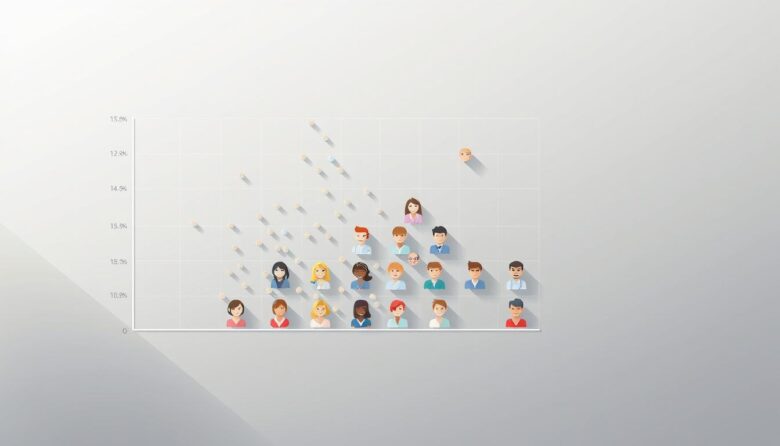Ever wonder why some dating apps feel smarter than others? Behind the swipe-driven chaos lies a science designed to connect compatible people faster. Modern platforms use advanced algorithms to group profiles based on shared traits, turning endless scrolling into targeted matchmaking.
These systems analyze behavior, interests, and preferences to identify patterns. By focusing on similarity metrics, they filter out mismatches early. This approach reduces frustration and increases meaningful connections—no more wasting time on dates that go nowhere.
Human psychology plays a key role here. People naturally gravitate toward familiar traits, a bias apps leverage to boost engagement. Machine learning models refine these groupings over time, learning from millions of interactions to predict compatibility.
Leading platforms now process thousands of data points per profile. They balance technical precision with human decision-making habits. The result? Less random browsing, more strategic suggestions that align with what users actually want.
Understanding the Role of Clustering in Modern Dating Profiles
The secret to successful matches isn’t luck—it’s sophisticated technology. Dating platforms analyze millions of profiles using machine learning models to group people with shared interests and behaviors. This method transforms random browsing into strategic suggestions that align with genuine compatibility.
Key Concepts Behind Profile Grouping
Hierarchical clustering organizes profiles like tree branches. It starts broad—grouping by location or age—then drills down to specifics like hobbies or communication styles. This layered approach helps platforms create similarity-based clusters that evolve as people interact.
Advanced algorithms process thousands of data points per profile. They track patterns humans might overlook, such as response times or emoji usage. These insights feed into predictive matching models that improve accuracy with every swipe.
The Psychology That Drives Grouping Behavior
People naturally prefer familiar traits. Curated selections reduce decision fatigue by 43% compared to random options. When platforms present clustered matches, individuals feel understood without sensing artificial manipulation.
Effective grouping balances technical precision with emotional comfort. It predicts preferences while respecting privacy—a critical factor in maintaining trust. This psychological alignment makes modern dating algorithms feel less like machines and more like intuitive partners.
Exploring User Clustering in Matchmaking
Modern dating platforms have shifted from chaotic browsing to precision-driven connections. At the core lies machine learning—a tool transforming how similarity metrics shape romantic possibilities. By analyzing behavioral patterns and preferences, these systems create dynamic groups that evolve with every interaction.
How Machine Learning Reshapes Compatibility
Advanced algorithms digest millions of data points daily. They track everything from conversation styles to activity frequency. This constant analysis allows platforms to refine compatibility clusters in real time, adapting to shifting preferences faster than manual methods.
One game-changing feature is predictive modeling. Systems learn which traits correlate with successful matches. A coffee enthusiast who prioritizes humor might find themselves grouped with profiles emphasizing wit and café meetups. This similarity-driven approach cuts through noise, spotlighting viable connections.
The technology also tackles swiping fatigue. Instead of endless options, people see curated selections from their compatibility group. Studies show this data-filtered process reduces browsing time by 38% while increasing meaningful conversations.
As algorithms improve, they uncover subtle patterns humans miss. Shared communication rhythms or niche interests become key grouping factors. These insights help platforms stay ahead of dating trends, proving machine learning isn’t just efficient—it’s becoming relationship-smart.
Breaking Down the Dating Algorithm Process
Dating apps don’t just guess—they use structured steps to turn profiles into meaningful matches. The algorithm process begins by cleaning and standardizing raw data. Bios, interests, and behavioral patterns are converted into formats machines understand.
Step-by-Step Code and Data Analysis Overview
First, the system preprocesses the dataset, removing inconsistencies. Random selection ensures fairness by picking initial groups without bias. Tools like CountVectorizer then transform text into numerical matrices. This reveals word frequency patterns that machines analyze.
Next, hierarchical methods group profiles into tree-like structures. Branches represent similarity scores based on shared traits. Closer connections indicate higher compatibility. This layered approach lets platforms refine matches as new data flows in.
Interpreting the Results from Hierarchical Clustering
Visual dendrograms show how profiles relate. A tight cluster of coffee lovers who value travel might branch separately from fitness-focused night owls. These results help algorithms prioritize matches with overlapping lifestyles.
Distance metrics quantify relationship strength between groups. Lower numbers mean stronger connections. Platforms use these insights to recommend profiles likely to spark conversations—cutting through noise with data-driven precision.
Technical Insights: Machine Learning and Clustering Techniques
Behind every swipe lies a complex technical ballet. Dating platforms deploy machine learning models that analyze profiles through advanced clustering techniques. Algorithms like K-means and hierarchical methods identify natural groupings, sorting people by shared lifestyles and communication patterns.
These systems measure similarity across multiple dimensions. The MDM algorithm evaluates traits like bio content and interaction history simultaneously. This multidimensional approach outperforms simpler methods, catching connections single metrics miss.
Feature engineering transforms raw data into compatibility predictors. Models process structured details (education, location) alongside unstructured elements like photo aesthetics. Distance metrics—cosine similarity for text, Euclidean for habits—quantify relationship potential between profiles.
Real-time optimization keeps clustering algorithms efficient. Distributed computing handles millions of profiles without lag. Feedback loops refine accuracy as matches succeed or fail, making the system smarter with each interaction.
The best models evolve like human intuition. They balance statistical precision with the messy reality of attraction. This technical foundation turns endless data into meaningful connections—one algorithmically sharpened match at a time.
Data Preparation and Vectorization for Profile Grouping
Modern dating algorithms rely on meticulous data preparation to transform messy bios into organized insights. Before machines can spot patterns, raw text undergoes rigorous cleaning. This removes filler phrases, typos, and irrelevant details that distort similarity calculations.
Transforming Bios into Actionable Data
Natural language processing extracts personality cues from free-form text. Advanced models identify keywords like “hiking” or “sarcasm” while detecting sentiment tones. This converts casual self-descriptions into structured features machines understand.
Techniques like lemmatization standardize variations. “Runner” and “running” become one data point. The system filters generic terms (“nice”) that lack predictive value. Only distinctive words remain—those that truly differentiate lifestyles.
Leveraging CountVectorizer for Effective Filtering
CountVectorizer turns text into numerical matrices. Each column represents a word’s frequency across bios. This dataset format lets algorithms compare profiles mathematically. A coffee lover’s profile might show high scores for “espresso” and “café.”
The tool skips common stopwords (“the,” “and”) to focus on meaningful terms. Combined with categorical traits like age, it creates comprehensive similarity profiles. Validation checks ensure no corrupted entries enter the process, maintaining match accuracy.
Final outputs merge vectorized bios with structured preferences. This hybrid approach captures both stated interests and unspoken communication styles. The result? Algorithms group people based on what they say—and how they say it.
Optimizing Profile Clusters for Match Accuracy
Creating meaningful connections in digital dating requires precision engineering. Platforms fine-tune similarity thresholds to balance group size with relevance. Too broad, and matches feel generic. Too narrow, and options dwindle. The sweet spot? Clusters that spark interest without overwhelming.
Advanced systems analyze historical success rates to identify patterns. If coffee lovers who hike have higher long-term satisfaction, algorithms prioritize these correlation points. Geographic density and activity frequency adjust thresholds dynamically—urban areas need tighter filters than rural ones.
Real-time behavior tracking reshapes clusters automatically. A sudden interest in cooking classes? The system recalculates similarity scores, shifting profile groupings within hours. This keeps suggestions aligned with evolving preferences.
Quality checks ensure coherence. Regular audits verify grouped profiles share genuine lifestyle overlaps. Outliers get reassigned, maintaining match integrity. Performance tests run constantly, balancing speed with accuracy even during peak usage.
A/B testing reveals which cluster configurations drive engagement. One version might emphasize shared hobbies, another communication styles. Data shows which approach reduces swipe fatigue while boosting conversation rates—proving optimization isn’t just technical, it’s strategic.
Implementing Automated Clustering Methods in Dating Apps
Building smarter dating platforms requires merging math with real-time adaptability. Automated clustering systems process profiles through correlation matrices, identifying patterns that human eyes miss. These tools turn raw data into strategic matches while maintaining fairness through randomized checks.
How to Integrate Random Selection and Correlation Matrices
Platforms start by assigning unique index numbers to profiles. A transposed DataFrame reveals hidden connections via the Pearson method. Values near 1 in the matrix signal strong compatibility—like matching coffee enthusiasts who both prioritize travel.
Random selection acts as a fairness watchdog. It prevents algorithms from favoring active users or specific demographics. This approach ensures new members get equal visibility, keeping the system balanced as it scales.
Behind the scenes, distributed computing handles millions of profiles without slowdowns. Caching frequent matches reduces server strain during peak hours. Error protocols handle incomplete data, maintaining stability when processing niche preferences.
The best implementations blend precision with flexibility. Real-time updates adjust clusters as people evolve, while historical success rates fine-tune thresholds. This dynamic approach proves math and romance can coexist—when guided by smart engineering.
Real-World Applications and Case Studies in Clustering
Real-world data proves clustering’s impact on modern romance. Dating platforms now showcase measurable improvements through algorithm-driven connections. These systems transform theoretical concepts into tangible matches, demonstrating how strategic grouping elevates digital dating.
Speed Meets Precision in Modern Pairing
Recent experiments reveal striking efficiency. One platform processed 118,853 profiles in under three hours, generating actionable cluster reports in seconds. Higher similarity thresholds (90cM) created tight groups of 34 matches—ideal for selective daters. Lower thresholds (28cM) produced 1,105 matches across 94 clusters, catering to diverse preferences.
The program adapts to regional needs without compromising speed. Urban areas with dense populations benefit from narrow clusters, while rural regions use broader groupings. This flexibility maintains engagement across geographic and demographic lines.
Performance metrics confirm scalability. Complex analyses finish in four seconds, regardless of user numbers. These results highlight how optimized thresholds balance quality with quantity—a critical factor in sustaining platform growth.
As algorithms evolve, they refine our understanding of compatibility. The web of human connection becomes clearer through data-driven insights, proving technology’s role in shaping relationships extends far beyond initial swipes.



